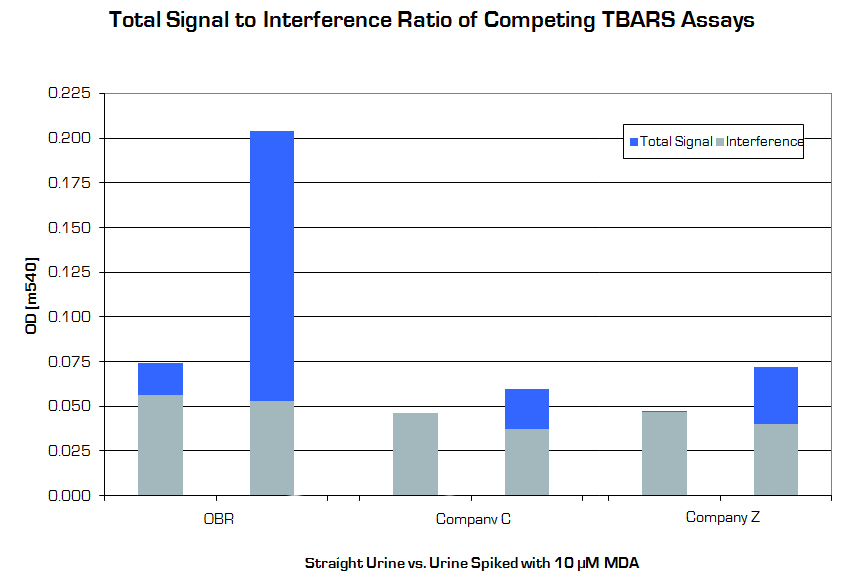Product Overview
TBARS Background
The TBARS assay was developed for the measurement of MDA production via lipid peroxidation and is a well-established and widely used method for the assessment of oxidative damage. However, as typically performed, the traditional method for TBARS analysis is often criticized for lack of specificity and sensitivity. Indeed, currently available TBARS assays require boiling the sample with strong acid which also generates interfering chromophores.
Oxford Biomedical Research (OBR) has recently developed a room-temperature TBARS method that eliminates the requirement for a high concentration of a strong acid and cuts reaction time in half. By running the assay at room temperature, low levels of interfering substances are generated. This results in more accurate, precise, and reliable TBARS measurements.
The advantages of our new TBARS Assay include:
- Industry-leading sensitivity – (250 nM colorimetric or 10 nM fluorometric)
- Proprietary reagent formulation to enhance MDA measurement
- Has a reduced background signal
- Can be performed in 15 minutes at room temperature
- Can be used with any biological, nutraceutical, or food sample
- Less expensive than other methods now on the market
- Eliminates the requirement of boiling samples
- Availability in cuvette & microplate formats
- Availability in colorimetric & fluorometric formats

Figure 1. Normal Urine was run with and without a 10 uM MDA spike. While all companies give a signal for normal urine, competitor methods are all due to interfering substances.

Figure 2. The three methods were compared relating to their percent of interfering chromophores (both endogenous and generated) to overall signal for identical spiked samples. Oxford's assay is much more sensitive, allowing a more reliable reading.
